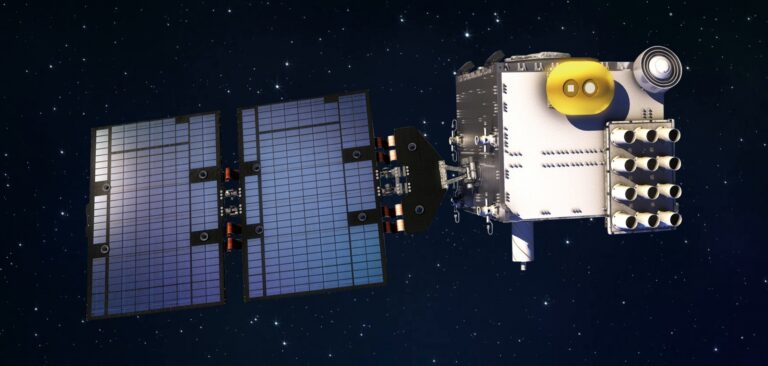A SpaceX Falcon Heavy rocket is ready to send six weather satellites into space on June 24, as part of the second generation, US-Taiwanese, COSMIC weather satellite program. Designed to improve weather forecasts and space weather monitoring, COSMIC-2 (Constellation Observing System for Meteorology, Ionosphere and Climate) is a partnership between the American Institute in Taiwan (AIT) and the Taipei Economic and Cultural Representative Office in the USA (TECRO), with NOAA and the Taiwan National Space Organization (NSPO) acting as designated representatives. This latest generation of COSMIC satellites will continue to build on the successes of the program, said Wilbur Ross, US secretary of commerce. The COSMIC satellites keep scientists and forecasters informed of minute changes in the atmosphere and in space, with this latest batch of satellites ensuring that this critical data is collected from the poles to the tropics. Once launched from Cape Canaveral, Florida, the COSMIC-2 satellites, known as FORMOSAT-7 in Taiwan, will undergo early check-out, calibration and validation process for approximately seven months before the data is declared operational. The satellites will officially be owned and operated by authorities in Taiwan. COSMIC-2, in concert with the infrared and microwave sounding instruments carried on polar-orbiting satellites operated by NOAA and its US and international partners, will help provide a complete set of global data for use in NOAAs operational weather prediction models, said Neil Jacobs, acting NOAA administrator. Each COSMIC-2 satellite, roughly the size of a kitchen oven, carries three instruments that detect electron density and other space weather information in the ionosphere, as well as atmospheric density, temperature, pressure and moisture. The collected data will be fed into NOAAs computer models used by forecasters to predict weather and climate and to monitor dynamic changes in Earths ionosphere, leading to improved weather and solar forecasts. COSMIC-2 will gather information about the vertical temperature and humidity of the atmosphere in the tropics, which holds most of the moisture that drives global weather patterns, said Louis W Uccellini, director, NOAAs National Weather Service. The high quality and large number of observations from the COSMIC-2 data stream will improve the accuracy of our weather forecast model outputs for our national and global areas of responsibility. Unlike the first COSMIC mission, launched in 2006 with its satellites orbiting the Earth in nearly polar orbits, the COSMIC-2 satellites will orbit Earth near the equator, taking measurements of the tropics and subtropics, and monitoring the ionosphere for the effects of solar storms. Watch here



